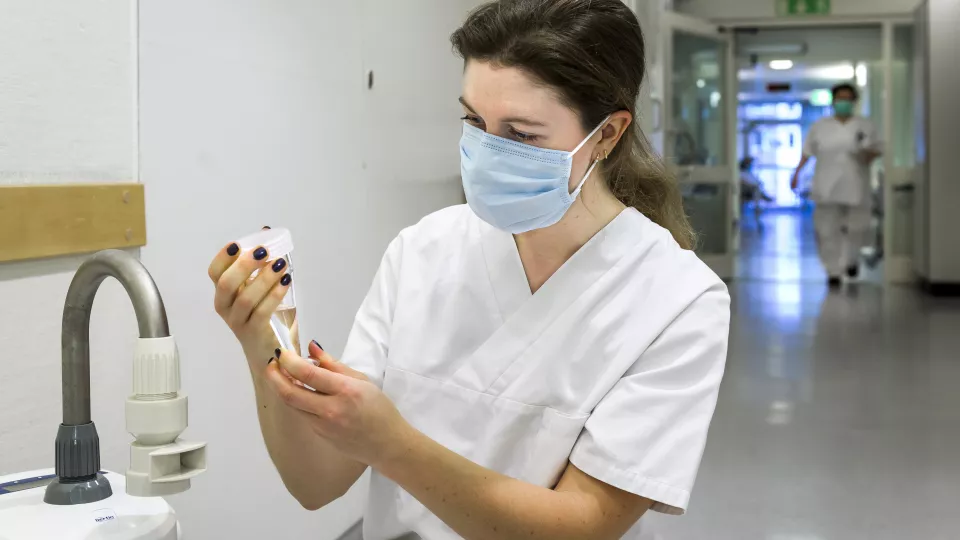In the early days of the covid-19 pandemic, it was thought that infection was spread mainly through large droplets from people with symptoms of the disease. Over time, it was realized that people are most infectious early in the course of the disease, and inhalation of airborne virus proved to be an important route of transmission. In most guidelines, the risk of aerosol infection was considered to exist only in the context of specific care situations, such as when respiratory support was given. Although practices have evolved in many cases over the course of the pandemic, the guidelines used to assess the risk of infection in healthcare settings have been based on outdated knowledge.
“What we have learned during the pandemic has been confirmed, that what influences the risk of infection is how much virus the patient is spreading, how close you are to the patient and how well ventilated the room is. In contrast, respiratory support does not seem to affect the risk of airborne viruses. This makes us hope that the WHO recommendations will change in the future and that the care procedures will be adapted,” says Carl-Johan Fraenkel, senior physician and specialist in infection medicine and health care hygiene at SUS, and researcher at Lund University.
The largest study of its kind
Researchers at Lund University carried out a large number of measurements in a hospital environment, mainly at the infectious disease wards at Skåne University Hospitals in Lund and Malmö, from spring 2020 to spring 2021, in order to gain more knowledge about how covid-19 spreads. The study is the largest of its kind and the results have now been published in the scientific journal Clinical Infectious Diseases.
Measurements of airborne viruses were made in the rooms of patients in intensive care units and other wards. An important factor in the measurements is that in most cases, patients who have been hospitalized have been carrying the infection for one or two weeks before they became ill enough to need care, which means that they do not carry as much virus as patients who have been recently infected.
Purpose-built instruments
The measurements were made with instruments specially designed to collect airborne biological agents, and samples were taken from corridors and public areas as well as from inside patients’ rooms. A total of 310 samples were collected, 231 of which were taken from inside patients’ rooms. In total, eight percent of the samples were positive, and in patient rooms, the figure was ten percent. The reason for the relatively low figure is that patients have been ill for so long, and therefore do not release as much virus into the air.
“We have taken a lot of samples in different patient situations and measured how many virus particles there are in the collected air. This has then been linked to how much virus the patient has in their body, how the ventilation looks inside the room, and also how far away the patient is,” says Sara Thuresson, a Ph.D. student in aerosol technology at LTH.
The measurements have shown that improved ventilation, both with a mobile unit with a so-called HEPA filter and with higher built-in ventilation, clearly reduces the risk of airborne viruses.
“We also took samples at different distances, less than one meter from the patient, one to two meters away, and more than two meters away. The risk of infection increases by 50% for each of these categories when you get closer to the patient,” says Sara Thuresson.
Old assumptions about the spread of infection
It is now clear that covid infection is mainly spread by small aerosol particles containing viruses. These can both remain in the air for many minutes and be spread over distances greater than two meters, especially in poorly ventilated environments. The particles can also get into the spaces between surgical masks or respirators. Despite this, many infection control programs are based on long-held assumptions about the spread of infection.
Using the existing guidelines, the best protective equipment has been used mainly for the sickest patients, those on ventilators or other respiratory support.
”But this group of patients seems to be the least infectious, instead it is recently infected patients who have been in other wards where simpler protective equipment has been used who have been the most infectious,” says Fraenkel.
Guidelines need to be revised
Research is continuing into the risk of spread in waiting rooms and corridors, where there are more often patients or staff without symptoms, but who may still be carrying infectious virus.
“The guidelines we have been using to assess risks in healthcare need to be reviewed. There has been a lot of debate about regulatory recommendations both nationally and internationally, and I believe that our study will help to change the international recommendations. Although the WHO and other infection control organizations recognize the central role of aerosols in the transmission of SARS-CoV-2, many aspects of infection control programs are still based on old traditions,” says Carl-Johan Fraenkel.


